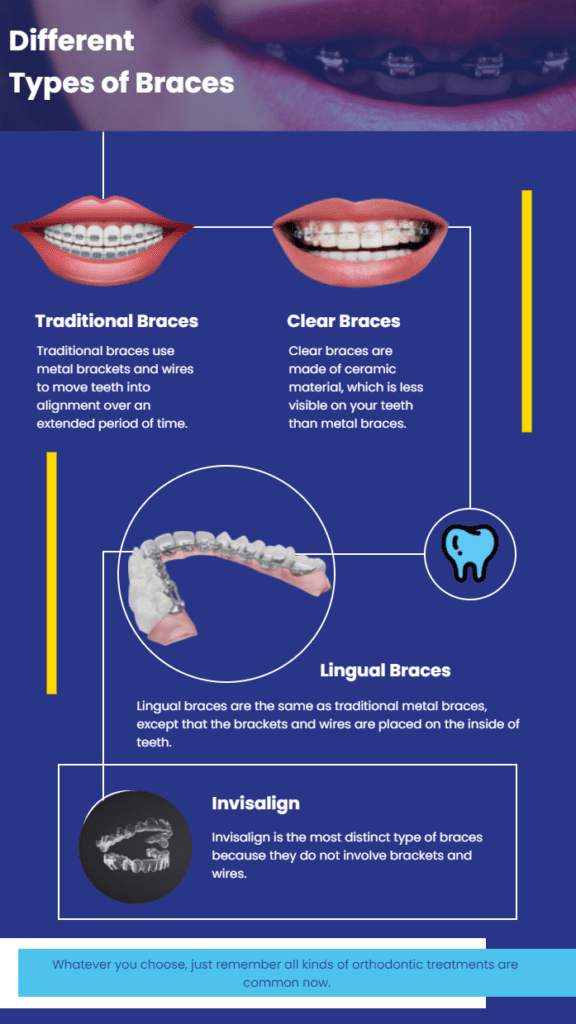Comprehensive Guide to Orthodontics Procedures for Fixing Dental Misalignments
In the world of orthodontics, the trip to accomplishing a perfectly lined up smile involves a myriad of procedures tailored to fix oral imbalances. From standard braces to unnoticeable aligners and even surgical options, the field of orthodontics provides a series of remedies to attend to varying degrees of oral irregularities. Understanding the complexities of each treatment, including their systems, benefits, and possible disadvantages, is crucial in making informed choices regarding one's orthodontic therapy. As we navigate through the thorough guide to orthodontic treatments for fixing dental misalignments, the elaborate details of each approach will unfold, clarifying the path towards a functional and unified dental placement.
Orthodontic Procedures Summary

Regular changes and tracking are crucial components of orthodontic treatment to make certain development is on track and to make any type of required adjustments along the method. By undergoing orthodontic treatments, clients can not just accomplish a straighter grin but likewise boost their overall dental health and function.
Standard Braces: Just How They Function
When taking into consideration orthodontic treatments for oral misalignments, traditional braces stand apart as a reliable method for correcting teeth positioning. Conventional braces include braces, wires, and bands that work with each other to use continual stress on the teeth, progressively moving them right into the wanted positioning. The braces are connected to the teeth making use of an unique adhesive, and the cables are threaded through the braces. By readjusting the stress of the wires, orthodontists can manage the direction and pressure used to each tooth, guiding them right into correct alignment with time.
As stress is used to the teeth with the dental braces, the bone surrounding the teeth is reshaped to support the new tooth placements. Clients will need normal modifications at the orthodontist's workplace to make sure the dental braces continue to apply the correct pressure for reliable teeth movement.
Undetectable Aligners: Cons and pros
Undetectable aligners use a convenient and discreet alternative to standard dental braces for dealing with oral imbalances. These clear, customized trays are virtually unnoticeable when worn, making them an enticing choice for people looking for a much more aesthetically pleasing orthodontic therapy. Among the primary benefits of undetectable aligners is read more their removability, permitting for much easier upkeep of dental hygiene compared to conventional braces. People can get rid of the aligners prior to consuming or brushing their teeth, decreasing the danger of food getting embeded the device and simplifying the cleansing process.

Surgical Orthodontic Options
Surgical interventions in orthodontics existing viable choices for attending to complicated dental misalignments that may not be successfully resolved with conventional orthodontic therapies. While conventional braces and unnoticeable aligners can fix many orthodontic issues, particular situations require medical treatment to accomplish optimal results. Surgical orthodontic options are typically recommended for serious malocclusions, substantial jaw disparities, and cases where the underlying bone framework needs modification to achieve proper positioning.
One typical medical orthodontic treatment is orthognathic surgery, which includes repositioning the jaws to deal with practical problems such as problem speaking or chewing. This surgery is typically executed in partnership with an orthodontist that aids line up the teeth before and after the procedure. Surgical orthodontics may likewise involve treatments to expose affected teeth, remove excess periodontal cells, or reshape the jawbone to create a much more unified face profile.
Before thinking about surgical orthodontic choices, people undertake an extensive analysis to establish the necessity and potential advantages of such interventions. cumming orthodontist. While surgical treatment may seem daunting, it can considerably enhance both the function and aesthetic appeals of the smile in instances where traditional orthodontic treatments fall short
Retainers and Post-Treatment Care

Post-treatment treatment includes adhering to the orthodontist's guidelines diligently. This might include correct oral health techniques, going to follow-up visits, and using the retainers as recommended. Failing to adhere to post-treatment treatment directions can result in regression, where the teeth slowly return in the direction of their initial settings. Constant retainer wear, excellent oral hygiene, and routine oral exams are important for keeping the results attained with orthodontic surgical treatment and making sure the long-lasting security of the dealt with dental positioning.
Final Thought
In final thought, orthodontic procedures provide different alternatives for dealing with dental imbalances. Surgical orthodontic options are readily available for more extreme imbalances. On the whole, orthodontic treatments can properly enhance oral wellness and visual appearance.
As we browse via the thorough overview to orthodontic procedures for correcting dental imbalances, the complex information of each approach will unfold, losing light on the course towards a unified and practical oral positioning. - cumming braces
One of the most common orthodontic treatments is the usage of dental braces, which consist of metal braces and cords that use mild pressure to progressively shift teeth check my blog right into the desired position.When thinking about orthodontic therapies for dental misalignments, typical dental braces stand out as a reliable technique for correcting teeth placing. Furthermore, undetectable aligners may not be suitable for complex orthodontic issues that call for even more substantial teeth activity, as they are generally advised for moderate to modest cases. Retainers are tailor-made orthodontic gadgets developed to hold teeth in their corrected positions after the conclusion of orthodontic therapy.